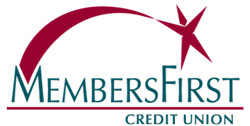The Paycheck Protection Program (PPP) has been a welcome relief for small businesses struggling to stay afloat while also keeping their employees’ incomes flowing during the coronavirus pandemic.
The program provides eligible businesses with unsecured loans to help them cover payroll, rent and other ongoing business expenses, with the possibility of partial or complete loan forgiveness. The loans are furnished by the Small Business Association (SBA) with applications processed by private lenders. There have been many changes and updates made to the PPP since it was first passed on April 24, 2020. Most recently, the SBA began accepting applications for Second Draw PPP Loans on Jan. 11, 2021 from participating lenders.
Unfortunately, the PPP has been plagued by fraud since its inception. In these scams, criminals posing as representatives of the SBA, another government entity or a legitimate lender trick business owners into applying for a loan through their organization, sharing information that can then be used to hack their accounts and more.
Here’s what you need to know about PPP scams and how to avoid them:
How PPP loans are processed
The more you know about how PPP loans work, the stronger protection you’ll have against possible scams.
If you want to apply for a PPP loan, simply download the loan application through the SBA. Fill it out and submit it to an SBA-approved lender. You may also need to provide all or some of the following documents:
- Tax returns for 2019
- Payroll reports showing how you achieved your requested total loan amount
- Documents proving your company’s structure, formation and ownership
- Verifiable payroll expense documents and breakdown of payroll benefits
- Payroll summary report with corresponding financial statements
- Certification that all employees live within the United States. If you have employees overseas, you’ll need to provide a separate list of these workers and their respective salaries.
- Most recent mortgage or rent statement and utility bills
- Documentation about how COVID-19 has negatively impacted your business
If you’re applying for a Second Draw PPP Loan, you will also need documentation that showcases how you have used, or plan to use, your original PPP funds.
After you’ve submitted your application, you can sit back and wait for approval. There’s no need to share any additional information on the phone or via email.
How can I protect my business from PPP fraud?
Here’s a list of dos and don’ts to help keep your business safe from PPP scams.
Do:
- Be wary of any individuals demanding immediate payment from you, or asking that you make immediate contact with them to be eligible for a PPP loan. These are likely scammers.
- Only use a lender that is accredited by the SBA. You can find a full list of SBA-approved lenders here.
- Look for the .gov at the end of each email or website allegedly from the SBA or another government entity, such as http://www.sba.gov.
- Reach out to your local and state government if you need help applying for a PPP loan.
- Report any suspected scams to the Better Business Bureau (BBB) and your state’s attorney general office. If a suspicious caller or email contact alleges to represent the SBA, alert the SBA as well.
Don’t:
- Share any personal information, like your Social Security number or checking account details, with an unverified caller or email contact.
- Pay for a program that promises to process or expedite a PPP loan request if the organization behind the program is not truly accredited by the SBA.
- Click on links or download files from an unfamiliar email address. These links could infect your device with malware.
Times are tough all around as the world grapples with the “new normal” and small businesses have been especially hard-hit. PPP loans can help struggling organizations get back on their feet, but scammers don’t want to let that happen. Use the tips outlined above to protect yourself and your business from a PPP scam. Stay safe!
We also want to caution you to be wary of sites that request your banking information, including your online banking login and password. The information obtained by providing this personal information typically isn’t necessary to process an application or fund the loan. Please let us know if you have shared this information so we can notate and help monitor your account.

